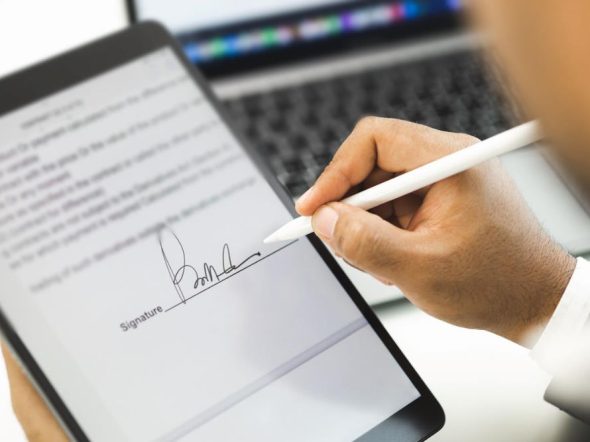Electronic signatures or e-signatures have sped up the documentation process in different industries. Electronic signatures are legally binding and carry the same weight as handwritten signatures, as long as one of the two parties intends to sign the document and not because of trickery.
If you’re looking to adopt electronic signatures to your business, this article will discuss the steps and how they can serve your business better.
Create And Present A Business Case
Implementing a new method such as e-signatures takes careful consideration because it can affect the current processes, procedures, or workflows. You can sign documents online but must present your case and explain why the company should switch from manual to electronic means of signing documents.
You can increase the chance of your company allowing electronic signatures by writing a business case wherein you can deliver the objectives of undertaking e-signatures. Highlight the reasons and how to integrate e-signatures into your business to help parties make informed decisions.
A business case is created to propose projects and explore their worthiness. As such, you must convince the deciding parties that e-signatures are good for business.
You can include various benefits of the e-signatures like paperless processes, cost-efficiency, or how it can affect one department workflow to another. When writing your business case, be objective about the problem of manually signing documents as a whole. At the same time, make sure the stakeholders know it’s one way to transform your company digitally.

Explore The Software
There are many electronic signature apps to choose from since they have varying features. Electronic signatures may also consist of texts or fonts or text and images. Some companies offer trial periods where you can leverage and use the features for free.
For example, some will give a few days of trial, while others only allow you to use it on a few documents. Suppose you’re also new to electronic signature apps. In that case, it’s an excellent opportunity to spend a bit of time getting to know how to utilize them to your advantage.
Your chosen app must prioritize getting the document signed faster. Electronic signatures can cut the waiting with manual signatures. Read the descriptions you will find in the app to understand better each feature’s purpose and why it could be helpful to your business.
Assess if you can integrate the app with other apps and easily add it to a workflow or pay for a subscription service using your preferred payment method. You can also look outside to your competitors and find out if they use electronic signatures and how they benefit from it.
Understand Its Legalities
It’s essential to address the legalities or laws surrounding the e-signature. Electronic signatures became legal in the United States under the US Electronic Signatures in Global and National Commerce (ESIGN) Act in 2000. It is legal wherever the federal laws apply. Simultaneously, territories where the federal law is not absolute follow the Uniform Electronic Transactions Act or UETA passed in 1999.
Under the ESIGN Act, the document’s signer must intend to sign it using an electronic signature. Using the app, you can draw your signature with the mouse or type your name at the designated area of the document to show intention. The signer must also click the Accept button or prompt on the app to show they know the signer is granting consent to do business electronically.
UETA underlines that parties must accept the legally binding effect of the e-signature and that it cannot be denied due to its electronic form. Contracts still hold power even when signed electronically. Laws that require signatures must also accept that electronic signatures satisfy or are accepted by the law.
Among all the states that adopt UETO or ESIGN Act, New York is the only one following the Electronic Signatures and Records Act or ESRA. The state has been using electronic signatures and acknowledges that manual and electronic means have equal power.
It’s essential to understand which law applies to what states. There are currently 49 states following UETA, along with the District of Columbia, the US Virgin Islands, and Puerto Rico. Adopting electronic signatures in your company also means you understand the legal requirements for your type of business to use the technology. Restrictions on real estate could be different in the health sector.
Learn About Electronic Signature Verification
Electronic signatures are valid under the laws, including the Electronic Identification, Authentication, and Trust Services (eIDAS). The eIDAS is a regulation that sets standards for electronic signatures and other forms of authentication mechanism proofs that allow electronic transactions to proceed and how it is valid and legally binding.
Electronic signatures must be proven to be the work of the intended signee and are determined through recorded information. Unlike manual signatures that individuals witnessed, the validity of the electronic signature uses geolocation and other information to trace the signee. Platforms have their way of employing security measures, such as recording the document after signing to prevent fraud by modification.
Verification works like reverse engineering data signing. It detects changes made to the signed data. A public key produces an original hash value by decrypting the signature during verification.
The hashed-signed data must match the original to be verified. Signing a document using an electronic signature becomes the catalyst similar to a login detail that verifies your identity. It’s essential to understand how verification works to help prove the security of the app you want to use.
You can use other methods to test electronic signature platforms and how to use them for your business best. You can sign documents yourself to see if it works with your processes.
Takeaway
You can introduce electronic signatures to your business by creating a business case to present to your team. Highlighting the why and how of electronic signatures can help the team see its possibilities. Next, you can explore the software and learn its features and how they best work with your workflows.
It’s also essential to understand the legalities of electronic signatures and that there are laws like UETO, ESIGN, and ESRA that ensure that electronic signatures are just as valid as handwritten ones. Finally, the verification test is to trace back to the signee of the e-signature.
